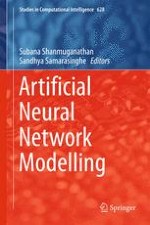2016 | OriginalPaper | Buchkapitel
Order in the Black Box: Consistency and Robustness of Hidden Neuron Activation of Feed Forward Neural Networks and Its Use in Efficient Optimization of Network Structure
verfasst von : Sandhya Samarasinghe
Erschienen in: Artificial Neural Network Modelling
Aktivieren Sie unsere intelligente Suche, um passende Fachinhalte oder Patente zu finden.
Wählen Sie Textabschnitte aus um mit Künstlicher Intelligenz passenden Patente zu finden. powered by
Markieren Sie Textabschnitte, um KI-gestützt weitere passende Inhalte zu finden. powered by
